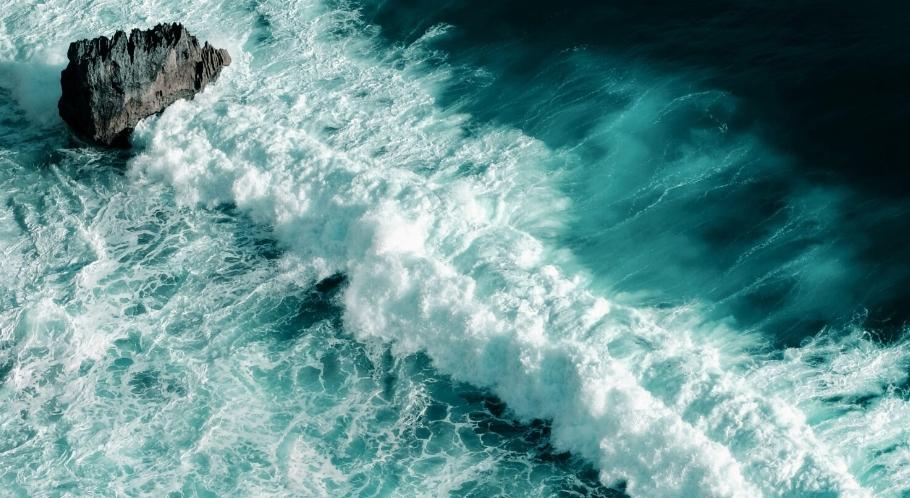In the study of ocean currents, scientists typically deploy GPS-tagged buoys and measure their velocities to reconstruct the underlying currents that transport them. This collected data also aids in detecting regions where water ascends from the depths or descends beneath the surface, phenomena referred to as “divergences.”
Through precise current predictions and the identification of divergences, professionals can enhance their ability to predict weather with greater accuracy, gauge energy transfer rates within the ocean, and make more accurate estimations regarding the dispersion of oil in the event of a spill.
Up until recently, scientists predominantly relied on a machine learning approach called a “Gaussian process” to make estimations of currents and locate divergences.
While this technique has the capability to make forecasts even when data is scarce, it often relies on physically inaccurate assumptions. For example, it assumes that the latitude and longitude components of a current are independent, which may not hold true. Additionally, the model assumes that a current’s divergence and its vorticity (characterized by a swirling motion of water) operate at identical magnitudes and length scales, a notion that ocean scientists recognize as invalid.
To address these constraints, a collaborative effort involving computer scientists and oceanographers, spearheaded by the Massachusetts Institute of Technology (MIT), has recently devised an innovative model. This model incorporates insights from fluid dynamics to provide a more accurate representation of the physical principles governing ocean currents.
The novel approach utilizes a technique referred to as a “Helmholtz decomposition” to simulate ocean currents. This method dissects the currents into two distinct components: vorticity, which accounts for the swirling motion of the water, and divergence, which accounts for the vertical movement of water, either sinking or rising.
While this method entails increased computational demands, the associated expenses are expected to be modest. Moreover, it promises to empower scientists to generate more precise estimations using buoy data, enhancing their ability to efficiently track the movement of biomass, carbon, plastics, nutrients, and oil within the ocean. Additionally, it will contribute to a deeper comprehension and monitoring of the impact of climate change on ocean currents.

“Our approach aligns with the underlying physical principles in a more precise and faithful manner. In this context, we possess substantial knowledge of the physics involved. We provide the model with some of this information, allowing it to concentrate on learning the aspects that are of significance to us, such as understanding currents beyond the buoy locations or identifying the occurrence and location of divergence,” elucidated Tamara Broderick, the senior author and an associate professor of Computer Science at MIT.
By assessing the performance of this novel model with a combination of synthetic and actual ocean buoy data obtained from the Gulf of Mexico, the researchers demonstrated that their approach surpassed both the conventional Gaussian process and an alternative machine-learning method employing a neural network. Their method exhibited superior accuracy in predicting currents and detecting divergences.
As an illustrative example, in a simulation that involved a vortex located near an ocean current, the novel technique accurately projected no divergence, whereas both alternative methods predicted a divergence with a notably high level of confidence.
In their forthcoming research endeavors, the scientists intend to introduce a temporal dimension into their model, recognizing that ocean currents can exhibit variability across both space and time. Additionally, they aim to enhance their ability to account for the influence of noise, such as wind-induced disturbances, on the data.
Broderick concluded by stating:
“Our aspiration is to work with the buoy-recorded velocity data, which often contains noise, and accurately determine the true divergence and vorticity. We aim to extend our predictions beyond the buoy locations, and we believe that our innovative approach will be instrumental in achieving this goal.”
Why is it important to study ocean currents?
Examining ocean currents holds immense significance for various reasons, as they exert considerable influence on climate regulation, marine life distribution, human activities, and numerous other facets. Below is a breakdown of the rationale behind the study of ocean currents:
Climate Regulation
Ocean currents play a vital role in the global distribution of heat, contributing to the regulation of climate patterns. One notable example is the Gulf Stream, which transports warm waters from the Gulf of Mexico to the North Atlantic, thereby influencing the temperate climate experienced in Western Europe. A comprehensive comprehension of these currents empowers scientists to craft precise climate forecasts and models.
Biodiversity and Ecosystems
Ocean currents exert a substantial influence on the dispersal of nutrients, subsequently influencing the habitat and flourishing of marine life. These currents have the capacity to transport nutrient-rich cold water to the surface, a phenomenon known as upwelling, which fosters biodiversity hotspots. Through the examination of ocean currents, we acquire valuable insights into marine ecosystems and the factors that govern their well-being and diversity.
Navigation and Shipping
For generations, sailors have harnessed the power of ocean currents to aid navigation. A profound comprehension of these currents can lead to the development of more efficient shipping routes, resulting in time and fuel savings.
Pollution Dispersion
In cases of spills or leaks, such as oil spills, the dispersion of pollution is strongly influenced by ocean currents. By constructing models that simulate these currents, we can anticipate the trajectories of pollutants and formulate improved strategies for their cleanup.
Fisheries Management
Numerous commercially valuable fish species adhere to specific ocean current patterns throughout their life cycles. Acquiring knowledge of these behaviors aids in the effective management and conservation of these fisheries.
Weather Prediction
Ocean currents play a pivotal role in shaping weather systems, as exemplified by El Niño, a warm ocean current with widespread implications for global weather patterns. A comprehensive comprehension of these currents can significantly enhance the precision of weather forecasting.
Climate Change Study
Anticipated alterations in ocean currents due to climate change will have far-reaching consequences on global weather patterns, sea levels, and marine ecosystems. The study of these currents enables us to gain insights into the ramifications of climate change and offers guidance for implementing mitigation measures.
Marine Archeology and History
Ocean currents also influence the distribution of artifacts from shipwrecks, providing valuable insights into historical events and vanished civilizations. In summary, a profound comprehension of ocean currents holds pivotal significance across a diverse range of disciplines, encompassing climate science, biology, navigation, conservation, and many others.

